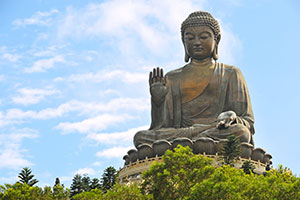7-Nights Essential Korea

7-Nights Essential Korea
South Korea
Travel Answers (Formerly Travel2)
Vacation Offer ID 1595986
Reference this number when contacting our travel specialist.
Travel Answers (Formerly Travel2)
Traveling to Seoul, Busan and Gyeongju offers a multifaceted exploration of South Korea, each city steeped in history, culture, and a distinct charm all its own. A temple stay experience adds greater depth of understanding to this vacation.Seoul, the dynamic capital, pulses with energy and innovation. Explore the historic Gyeongbokgung Palace, a symbol of Korea's grandeur, contrasted by futuristic skyscrapers of Gangnam. Dive into traditional markets like Namdaemun and Dongdaemun, bustling with vendors offering everything from spicy kimchi to trendy fashion. At night, indulge in Korean barbecue or sip soju in trendy rooftop bars overlooking the city's glittering skyline.
Traveling to the Demilitarized Zone (DMZ) offers a glimpse into one of the world's most heavily fortified borders. Depending on local conditions, visitors may tour landmarks like the Joint Security Area (JSA), where North and South Korean soldiers stand face-to-face. Witnessing the tense divide and learning about the region's history provides a fascinating insight into political relations on the Korean Peninsula.
A bullet train ride away, Busan captivates with its blend of urban sophistication and coastal beauty. Explore the vibrant markets of Jagalchi and Bupyeong, where fishermen hawk their daily catch and food stalls tempt with fresh seafood delicacies. Relax on the sun-kissed beaches of Haeundae or Gwangalli, framed by towering skyscrapers and the serene waters of the East Sea. Wander through the colorful alleys of Gamcheon Culture Village, adorned with street art and quirky boutiques, or hike up the iconic Busan Tower for breathtaking views of the city's sprawling coastline.
Outside Busan, Golgulsa Temple Stay offers a unique opportunity to immerse oneself in the serene ambiance of a traditional Korean temple. Participants engage in meditation, Buddhist rituals, and temple cuisine. Surrounded by tranquil mountains and ancient architecture, the experience provides a retreat from modern life, fostering inner peace and spiritual reflection amidst the natural beauty of South Korea's countryside.
Gyeongju mesmerizes with its ancient relics and serene landscapes. Known as the "museum without walls," it's dotted with UNESCO World Heritage sites like Bulguksa Temple and the Seokguram Grotto, showcasing exquisite Buddhist art and architecture. Stroll through the scenic grounds of Anapji Pond or hike up Namsan Mountain for panoramic views of the city and its historic treasures. Gyeongju's tranquil ambiance and rich cultural heritage make it a captivating destination.
Each city offers its own unique experiences, yet together they encapsulate the essence of South Korea's rich cultural tapestry and modern vibrancy.
South Korea's efficient transportation network makes traversing these cities a breeze. The high-speed KTX trains connect Seoul, Gyeongju, and Busan swiftly, allowing travelers to maximize their time and explore more of what each destination has to offer. Additionally, convenient subway systems and intercity buses provide easy access to key attractions and hidden gems alike, ensuring a seamless and unforgettable travel experience.
Vacation Inclusions
- Airport transfers
- 5 nights 5-star hotel accommodation
- 1 night 4-star hotel accommodation
- 1 night Temple accommodation
- Full day private Seoul Highlights tour
- Full day Demilitarized Zone (DMZ) group tour
- Half day private Busan tour
- Half day private Gyeongju tour
- Breakfast daily
- 5 lunches
- 1 dinner
- Travel by bullet train
Featured Destinations
| Gyeongju | Destination Guide |
| Pusan (Busan) | Destination Guide |
| Seoul | Destination Guide |
Valid Date Ranges
Prices listed may vary by departure dates. Full terms and conditions apply. Rates vary by date of travel and services; please inquire for the best prices for your preferred travel dates.
All fares are quoted in US Dollars.





